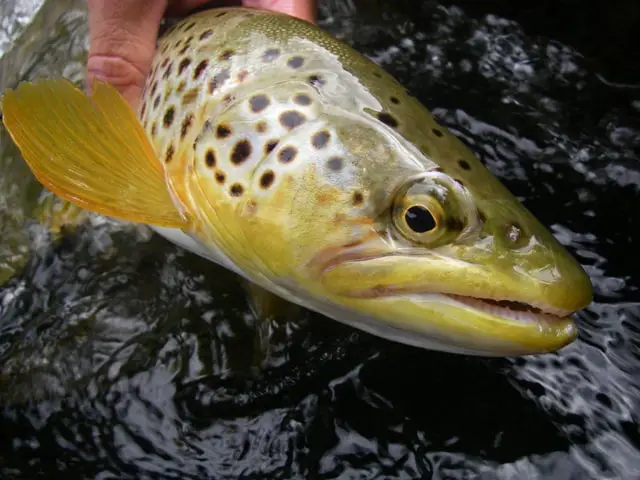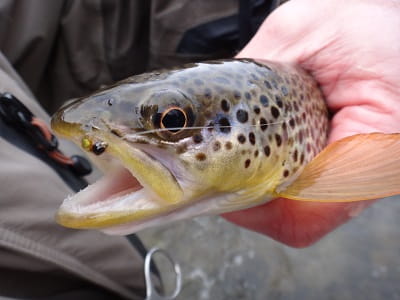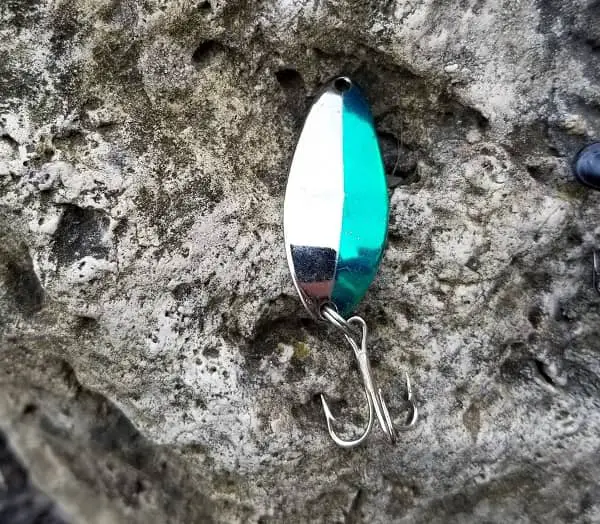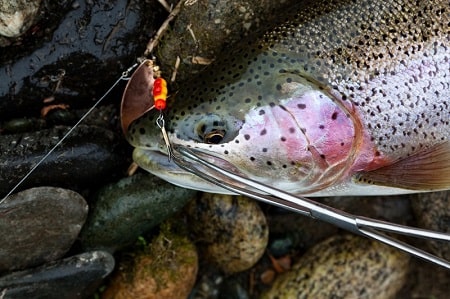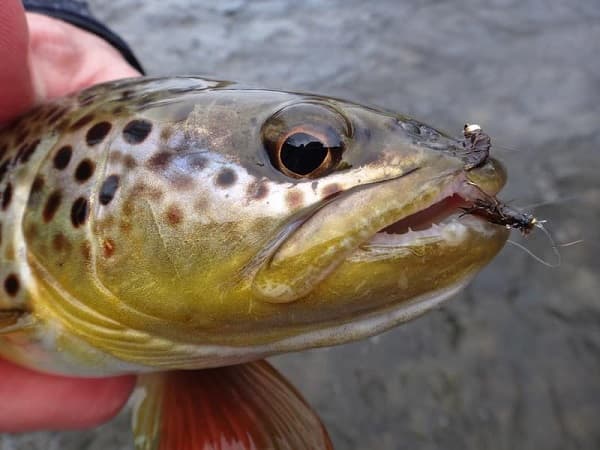9 Best Trout Fishing Knots For Beginners That Guides Use
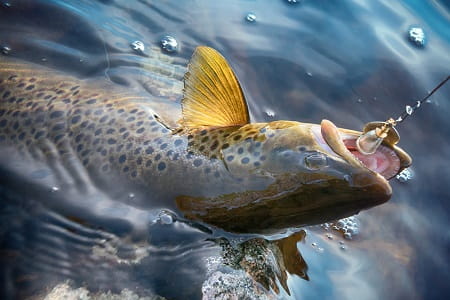
As a trout guide, I know how important a good knot is, especially when a huge trout is on the line.
In my experience, the knot is often your weakest link in the setup and is almost always where the line will break. Sometimes multiple knots are used in the leader and line so there are multiple weak spots. Based on the knot tests I’ve done and others have done, some knots are just better and stronger.
But, knot strength isn’t everything. You also want a know that is fairly easy to tie.
I’ve compiled a list of the strongest and easiest-to-use trout fishing and fly fishing knots that I and my guides use and teach our clients.
For most trout fishing, you will only need to know two trout fishing knots. The most used knot to tie the line or a leader to a hook, to a lure, or to a swivel, is the Improved Clinch Knot. The other knot you should know is the Double Uni Knot, which enables you to tie two lines together.
I will also provide a very easy tip that will instantly make your knot tighter, and make it stronger.
Best Fishing Knots For Trout
- Improved Clinch Knot: One of the most popular knots in fishing to tie the line to a hook. Be sure you do it correctly.
- Davy Knot and Double Davy Knot: The Double Davy Knot is my go-to knot for tied line to a hook or to a swivel. It is used by a lot of top competition anglers and guides for a few reasons.
- Uni-to-Uni Knot: Also known as the double uni knot. I use this to tie two lines together.
- Triple Surgeons Knot: I use this knot to tie two lines together.
- Palomar Knot: A super strong knot for tying a braided line to a hook.
Trout Fishing Knot Strength
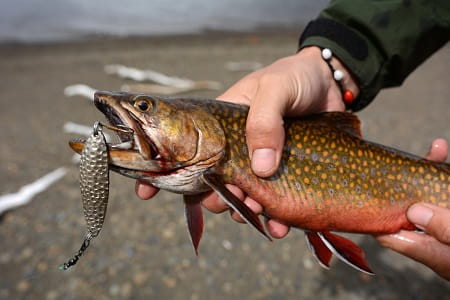
While some knots will give you 80% knot strength, others will be over 95% knot strength.
Based on knot my testing, and testing from other, a knot that provides only 80 to 90% strength is what I would consider a weak knot.
What this means is a knot with 80% knot strength would make a 10-pound line now only 8 pounds strong.
I only use good knots that are 95% to 100% knot strength, but are still easy and fast to tie.
Make Your Knots Stronger With This Simple Tip
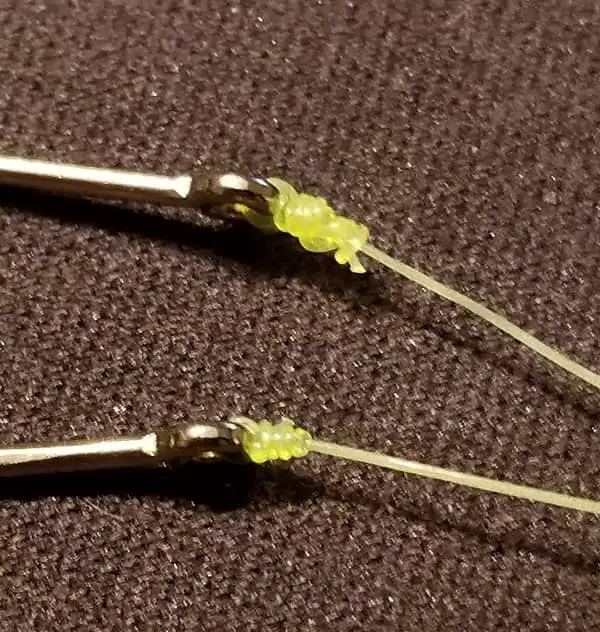
There are some tricks to tying good knots.
When you pull your knot tight, it can create friction, which can damage and weaken the knot. This is mostly when using mono or fluorocarbon lines.
To prevent this, use a little saliva, or water from the lake or river to wet the knot before the knot snugs up tight. Also, slowly pull the knot tight and with steady pressure. Pulling the knot fast can damage or weaken the line or even break the knot.
Once the knot is tight, test it by pulling it fairly hard to ensure it’s a strong knot but be careful the hook or lure doesn’t slip out of your hand and hook you.
Effective Knot-Tying: Easy and Fast
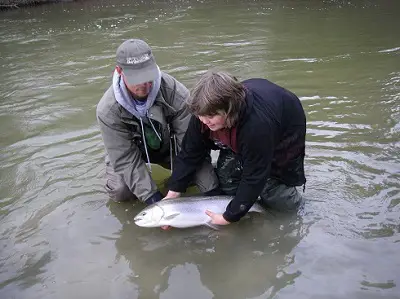
Your goal is to be able to tie your essential knots properly and to do them easily and fast so you’re not wasting too much time. The knots I’ll provide below are just that, the easiest knots to tie and fast.
You don’t need to knot a lot of knots so for the few knots that you do know practice makes perfect.
One of the tips I tell my clients is don’t practice on the river or lake when you’re fishing. Instead, practice at home when you’re not being distracted by fish jumping or the urge to cast a line.
Practice in front of the TV while the game is on or when you’re bored.
Best Trout Fishing Knots For Line To Line Connections:
There are a number of knots you could use to connect two lines together. Connecting two lines is sometimes done when lure fishing, float fishing, and often in fly fishing in order to connect a leader to the mainline.
I use and recommend three knots: the Double Surgeon’s Knot, the Triple Surgeon’s Knot, and the Double Uni Knot
Double Uni Knot
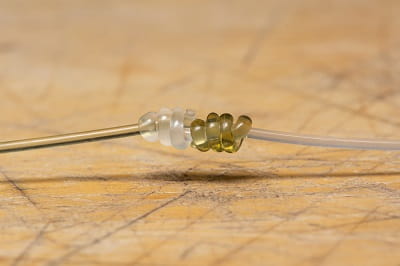
The Uni-to-Uni Knot, also known as the Double Uni Knot, is versatile, simple, and strong and is perfect for beginners.
It’s used for attaching the line-to-line and is for connecting two lines of similar diameter or different diameters.
It’s mostly used with mono or fluorocarbon fishing lines, but it works great for connecting braided lines or mono to braid.
Because it ties lines of different diameters and still maintains its strength, and because it is good with all types of lines, I consider this to be the overall best trout fishing knot you can use. If I could only use one knot for tying line to line, then this would be it.
The Triple Surgeon’s Knot: A Guide Favorite
The double surgeon’s knot or the slightly stronger Triple Surgeon’s Knot is probably the most used knot for line-to-line connections.
It’s an easy knot to tie, it’s quick to tie, and it’s one of those strong knots that I can trust to hold up to big fish.
The Two Best Trout Knots For Tying Line To A Hook
There are many knots you could use to attach the line to a hook or to a lure. You want the strongest knot possible so you don’t lose your best good trout lures or lose the fish.
The Davy and Double Davy Knot
The Davy Knot is now my go-to knot and I learned this knot from one of the top competition fly anglers in the USA. He told me that the Davy knot is what the guys on Fly Fishing Team USA use because it’s very fast and easy to tie and it has a very small knot profile so it’s great on tiny hooks.
When I am fishing for bigger trout, steelhead, or salmon, or when fishing lures or streamer flies I go a little stronger and use the Double Davy Knot.
The Improved Clinch Knot
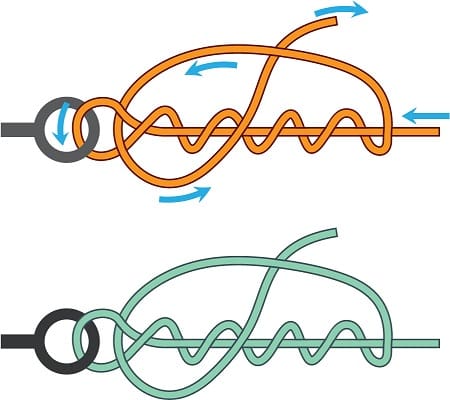
Likely the most popular knot and one I used for over 20 years and still use today. This classic knot is perfect for securing any hook to the leader or line.
It’s easy to tie and has been tested and proven to be very strong which puts it in the best trout knots category.
Best Knot For Tying Braided Fishing Line To Mono:
The Albright Knot is an excellent choice for joining braided lines to monofilament or fluorocarbon lines.
Best Knot For Tying Braided Fishing Line To Braided Line:
The Double Uni Knot is perfect for connecting braided line to braided line and also Braid to Mono or braid to Fluorocarbon. Follow the same steps as mentioned earlier.
Best Knot For Tying Braided Fishing Line To The Hook:
The Palomar Knot
The Palomar Knot is proven to be one of the strongest and most reliable fishing knots and is used by many professional bass, walleye, and trout anglers. It is a great knot for tying a lure or swivel to a braided line.
Other Fishing Knots For Trout Fishing
Some anglers prefer to use a loop knot to connect a lure or streamer fly. The loop is said to provide more movement and action to the lure.
Non-slip Loop Knot
This knot creates a strong loop at the end of the line, allowing the lure or trout flies to move more freely.
Best Knots For Fly Fishing
I know some of you trout fishermen are also fly fishermen and in fly fishing, I use many of the same knots as listed above, with a few added knots primarily used for the fly line setup, or for leader-to-fly line connections.
The Arbor Knot
The Arbor Knot is what I use to connect the fly reel to the Backing:
- Wrap the backing around the reel arbor and tie an overhand knot around the standing line.
- Tie another overhand knot in the tag end.
- Pull the standing line to slide the knots together and tighten against the reel arbor.
Albright Knot
The Albright Knot is a common knot to connect the Backing to the Fly Line: (Refer to the earlier steps in this article)
However, I prefer the Nail Knot for attaching the Backing to the Fly Line. It’s harder to do, but I prefer the smoother connection. To make it a bit easier there is a Nail Knot tool you could purchase.
The Nail Knot
Although most leaders and most fly lines now come with pre-tied loops to do a loop-to-loop connection (I hate that connection), the Nail Knot is my preferred knot to connect the Fly Line end with no loop to the Leader with no leader loop.
The reason I prefer the nail knot is that the leader but loop knot is bulky and can catch on the rod guides. The Nail Knot slides through the rod guides much easier than two loops connected together.
That butt section of the leader is thick, and that butt end leader loop knot is thick and has caused many anglers to lose big fish once that knot gets into the rod guides.
Perfection Loop Knot
The Perfection Loop Knot is the same knot that is used for the leader loop found on most fly leaders which is used to attach to the fly line loop.
If you need to cut that knot off or tie a new loop knot, this knot is ideal for creating a loop-to-loop connection between the leader and tippet.
With practice and patience, you’ll be tying these knots like a pro in no time. Remember, the key to successful knot-tying is tying a strong knot fast so you can get back to fishing.
If you have a question or favorite knot you would like to share let us know in the comments section below.
Tight Lines,
Graham
Resources:
FISHING WITH FLUOROCARBON. WHY USE FLUOROCARBON, What is it made from?
Monofilament Fishing Line – Why Use Monofilament – What is it made from?
What Are Copolymer Fishing Lines Made of?
Strength Chart for the Best and Strongest Fishing Knots | Knots For Fishing

